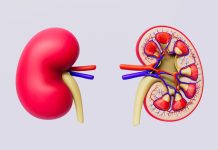
Researchers at Vanderbilt University Medical Center have conducted the largest study of its kind, revealing unexpected changes in the exocrine tissues of the pancreas in both type 1 and type 2 diabetes, as well as with aging and obesity.
This groundbreaking research, published in the journal Diabetes, challenges the conventional wisdom that diabetes primarily affects the insulin-producing endocrine cells of the pancreas and underscores the importance of considering the entire pancreas in diabetes investigations.
Beyond the Endocrine Focus
The pancreas, a vital organ with a majority of exocrine tissue (comprising 1%-2% pancreatic islets), has been historically challenging to study due to limited access and rapid tissue degradation.
Most diabetes research has centered on the endocrine pancreas, particularly beta cells, where insulin production occurs.
However, there’s growing recognition that diabetes impacts the entire pancreas, leading to the need for comprehensive investigations.
Unprecedented Access to Pancreatic Tissues
In this study, researchers gained access to a substantial and well-preserved collection of tissue samples from 119 donors. T
hese samples were provided by organizations such as the Vanderbilt Pancreas Biorepository, the NIH’s Human Pancreas Analysis Program, and the network for Pancreatic Organ Donors with Diabetes (nPOD).
The donor pool included individuals with type 1 diabetes, type 2 diabetes, and those without diabetes.
Diabetes and Pancreatic Changes
Diabetes is characterized by elevated blood glucose levels due to insulin deficiency or insensitivity.
Type 1 diabetes involves autoimmune destruction of insulin-secreting beta cells, while type 2 diabetes typically occurs in adulthood and results from inadequate insulin secretion, often linked to obesity.
Effective glucose control is crucial to prevent complications and reduce the economic burden of diabetes.
Before identifying diabetes-related changes, the researchers characterized pancreatic tissues across various ages and body weights, providing essential insights into the “normal” pancreas.
This foundation allowed for the identification of unique alterations associated with type 1 and type 2 diabetes.
Differentiating Diabetes-Related Changes
The study revealed significant distinctions in pancreatic tissues from donors with type 1 and type 2 diabetes.
These differences encompassed inflammation, atrophy, fibrosis patterns, and vascular damage. Moreover, these changes, often linked to tissue injury and inflammation, could potentially carry the risk of progressing to pancreatic cancer.
Avenues for Future Research
The findings have set the stage for further investigations into the complex interplay between exocrine and endocrine tissues in the pancreas. Understanding how alterations in one part of the pancreas affect the other will be critical.
Additionally, researchers aim to unravel the drivers behind these changes and their significance in the context of diabetes.
Conclusion: A Holistic Approach to Diabetes Research
The Vanderbilt University Medical Center’s comprehensive study challenges the conventional focus on the endocrine aspect of diabetes by shedding light on the often-overlooked exocrine tissues of the pancreas.
These insights open new avenues for research into diabetes mechanisms, complications, and potential therapeutic targets, ultimately contributing to a more holistic understanding of this widespread and costly disease.
If you care about kidney health, please read studies about pesticide linked to chronic kidney disease, and this drug may prevent kidney failure in people with diabetes.
For more information about kidney health, please see recent studies about drug duo that may treat kidney failure, and results showing these vegetables may protect against kidney damage.
The research findings can be found in Diabetes.
Follow us on Twitter for more articles about this topic.
Copyright © 2023 Knowridge Science Report. All rights reserved.



